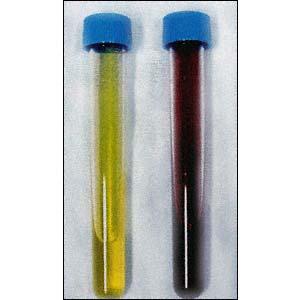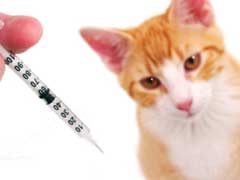Due to the developments in Veterinary medicine, more complex surgical procedures are done on pets. Aside from that, there is also increased use of transfusion therapy to treat different kinds of diseases making the demand increase for blood bank programs. There were no animal blood banks before, so Veterinarians had to use their own pets, their staff's pets, or even their clients' pets as blood donors.
Just as human blood banks depend on human blood donors, animal blood banks must depend solely on animal blood donors. Blood is species specific - dogs can receive only dog blood and cats can only receive cat blood. In addition, dogs have blood types just as humans have blood types. Dogs have eleven different blood groups and the most important one is the A1/A2 system. Dogs that have A negative blood types are considered universal donors.
Although dogs rarely have isoantibodies against other blood types, it is still recommended that all recipients be cross matched prior to receiving a blood transfusion, especially dogs which have received a previous blood transfusion to make sure that your donor and recipient are compatible.
There are two types of cross-matching tests: the major and minor cross matching. For major cross-matches, red cells from the donor are mixed with serum from the recipient. Then it is observed to see if there is a reaction; the recipient may attack donor cells and not accept them. If you have a major cross-match incompatibility you shouldn't do a transfusion, unless you're really desperate. In a minor cross-match test, the recipient's red cells are compared with the donor's serum. In minor incompatibilities, parts of the donor's blood can be given to the recipient but not the blood in its entirety.
Qualities for canine donors are: healthy, no history of metabolic or heart disease or seizures, lean body weight of greater than 50 kg, and 1-7 years of age. They should not be on any medication, except heartworm and parasite preventatives. Potential donors should have a good temperament, have been neutered and nulliparous, and have jugular veins that are easily visualized and palpated. They should also be current on vaccines. Greyhounds have been promoted as ideal blood donors because of their amenable disposition and high PCV.
After the canine's blood type is determined and is acceptable, donors are tested to make sure their blood values are high enough and no infectious disease is present before blood is drawn as with human blood donors. CBC, biochemical profile, U/A, fecal exam, von Willebrand's factor, is done as well as testing for Dirofilaria immiti, Ehrlichia canis, Babesia canis, B. gibsoni, Brucella canis (in intact or previously bred dogs), and Bartonella.
Blood donation takes more or less 30 minutes. Prior to going to the donation center, special preparations like fasting is not required, sedation of donors is not also necessary. During the blood donation, the donor is put on a table. In order to expose the skin over the vein to be punctured, there is a need to shave a small patch of hair on the neck. Then the area is cleansed with alcohol. Inserting a needle into the jugular vein, which is a large vein in the neck, collects blood. The blood that goes into the needle goes through a tube, and then it is collected into the collection bag. After the procedure, pressure is applied on the punctured site to stop any bleeding; a mild bruise may be present at the site.
Fluid and nutrients are then replaced by giving water and food after blood is drawn. The body compensates by producing new red blood cells immediately after the donation. In the next 24 hours after donating, strenuous activities should be avoided. Two months must elapse before the dog can donate blood again. By that time, the blood volume and red blood cell count will be back to normal.
The dogs are given gifts and treats after donating. A dog may get a tag, which identifies him or her as a blood donor, edible rewards such as dog biscuits, a jar of baby food, a can or a large bag of dog food and some donors may even get brand new toys or cool donor bandanas.
After the collection, the different blood components - red cells, plasma, and platelets will be separated. Anemic recipients are given red cells. Plasma builds up blood volume, thus it is given to animals that are not making enough or are losing large amounts of protein. For those recipients whose platelets are depleted or dysfunctional, they are given platelet-rich plasma.
Now, there several animal blood banks that supply blood products to Veterinary hospitals. Fortunately, dog owners have a positive response to the plea for blood donations. Every year, the animal blood bank processes roughly 2,000 units of blood donated by dogs. The donated blood is then brought in to the bank at the Veterinary hospital and to the bank's bloodmobile, which visits Veterinary clinics and kennel clubs.
Other regional blood banks rely entirely on the generous and caring people who enroll their pets in blood donor programs. These animal blood banks hold drives to find new volunteer donors and encourage them to donate just like the Red Cross and other health organizations do to acquire human blood donations.
Do you have a friendly, healthy dog that fits the average weight and age requirements to be a donor volunteer? Would you like your dog save the lives of other dogs? Check the location of regional blood banks for dogs and cats or the list of Veterinary Hospitals and University Veterinary Medical Centers that manage their own blood donor/blood bank programs. You can also contact the one nearest you or ask your Veterinarian if there's an animal blood donor program with a donation site in your area.

 Bald Spots on Cats
Bald Spots on Cats Bald spots are a common occurrence in cat
Bald Spots on Cats
Bald Spots on Cats Bald spots are a common occurrence in cat
 Hematuria in Cats
Hematuria (Blood in Urine) in Cats
Hematuria in Cats
Hematuria (Blood in Urine) in Cats
 Top 10 Things to Know About Cat Vaccinations
Cat va
Top 10 Things to Know About Cat Vaccinations
Cat va
 Benadryl For Cats
Benadryl For Cats Benadryl (active ingredient diphenhydramin
Benadryl For Cats
Benadryl For Cats Benadryl (active ingredient diphenhydramin
 Feline Renal Failure Diet – What To Feed To My Cat?
What i
Feline Renal Failure Diet – What To Feed To My Cat?
What i